This an excerpt from the Kenya Virtual Tour.
See Archives November 2009 for the entire tour.
Day 20: Mass Exodus
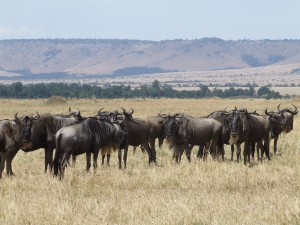
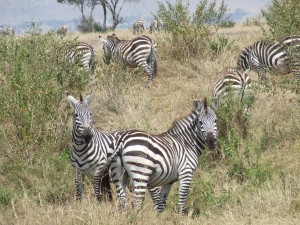
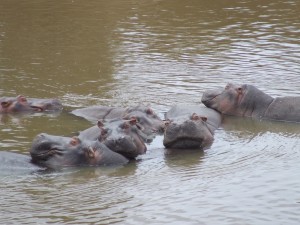
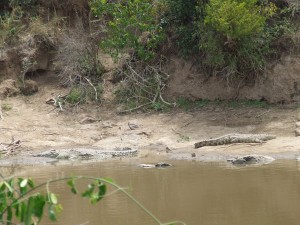
As the thundering herd crosses the Mara river, there are other dangers: hippos lying on the river bank or submerged in the water. And then there are the 18-20 foot long crocodiles seen here doing a little lazy sunbathing. Our guide made sure we were at a safe distance – on the opposite bank.
For more information, go to:
www.IslandGetawaysTravel.com

Tourists from around the globe visit in the summer months to view the annual wildebeest migration from the Serengeti Plains in neighboring Tanzania. Millions of wildebeest move north in search of food during the months of June through September. Tagging along in the visual food chain are zebras, lions, cheetahs and hyenas.
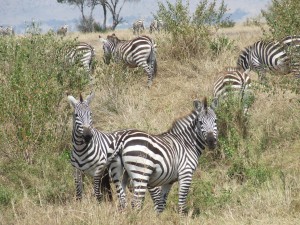
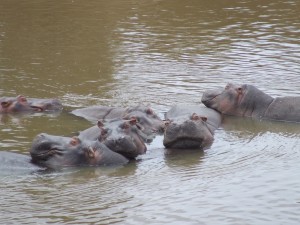
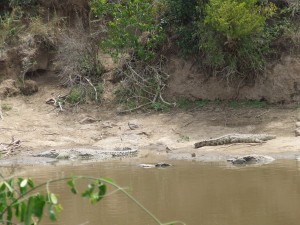
As the thundering herd crosses the Mara river, there are other dangers: hippos lying on the river bank or submerged in the water. And then there are the 18-20 foot long crocodiles seen here doing a little lazy sunbathing. Our guide made sure we were at a safe distance – on the opposite bank.
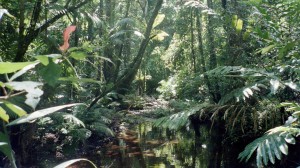 Traveling farther north of Cairns, you approach the Heritage-listed Daintree Rainforest, the oldest rainforest in the world, containing the most species of plants and animals in Australia. This is a lush, tropical but wild world best experienced with an expert guide. This is an unpredictable environment, not a petting zoo or a place to wander off and explore alone.
Traveling farther north of Cairns, you approach the Heritage-listed Daintree Rainforest, the oldest rainforest in the world, containing the most species of plants and animals in Australia. This is a lush, tropical but wild world best experienced with an expert guide. This is an unpredictable environment, not a petting zoo or a place to wander off and explore alone.
The indigenous cassowary, somewhat resembling an ostrich in size and appearance, is listed as an endangered species and is quite rare and elusive. Standing between 5 and 6 feet in height, it has a black body and bright blue head with 2 swinging wattles at the front of its neck and an orange patch at the back. This flightless bird has one very long, sharp spike on each foot. If it feels threatened, it has been known to charge straight ahead, lashing out violently with those claws and slashing the target to ribbons.
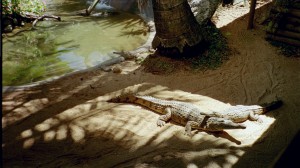 If you take a cruise on the Daintree River, you may spy an estuarine crocodile lazing on the riverbank. It’s the ones you don’t see lurking underneath the water that are truly dangerous. In one rapid movement, they will pounce with sudden fury on unsuspecting prey, wrestling with them before dragging them below the water line. This is as close as you want to get. Definitely no swimming here.
If you take a cruise on the Daintree River, you may spy an estuarine crocodile lazing on the riverbank. It’s the ones you don’t see lurking underneath the water that are truly dangerous. In one rapid movement, they will pounce with sudden fury on unsuspecting prey, wrestling with them before dragging them below the water line. This is as close as you want to get. Definitely no swimming here.
We will return to our 4WD vehicle and take the cable ferry across the Daintree River to continue our journey through the Cape Tribulation wilderness area. Later, we will visit the coast for an invigorating walk on Coconut Beach and some afternoon tea before heading back to “civilization”.
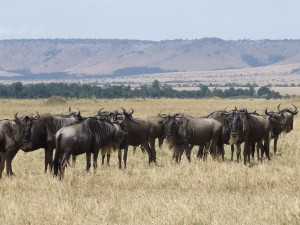
Tourists from around the globe visit in the summer months to view the annual wildebeest migration from the Serengeti Plains in neighboring Tanzania. Millions of wildebeest move north in search of food during the months of June through September. Tagging along in the visual food chain are zebras, lions, cheetahs and hyenas.



As the thundering herd crosses the Mara river, there are other dangers: hippos lying on the river bank or submerged in the water. And then there are the 18-20 foot long crocodiles seen here doing a little lazy sunbathing. Our guide made sure we were at a safe distance – on the opposite bank.
Reminder: Monthly Raffle
Just to keep things fresh and interesting, I am going to change the drawing this month. Simply e-mail me and vote for your favorite photo from the last 3 tours for an additional entry: Tahiti – February, Australia – March, April – Kenya.
The drawing will be on the last day of the tour, Thursday, April 30 for a Kenya Gift Pack.
Jacintha@IslandGetawaysTravel.com
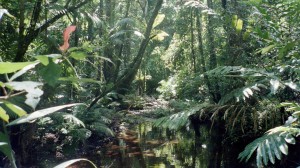 Traveling farther north of Cairns, you approach the Heritage-listed Daintree Rainforest, the oldest rainforest in the world, containing the most species of plants and animals in Australia. This is a lush, tropical but wild world best experienced with an expert guide. This is an unpredictable environment, not a petting zoo or a place to wander off and explore alone.
Traveling farther north of Cairns, you approach the Heritage-listed Daintree Rainforest, the oldest rainforest in the world, containing the most species of plants and animals in Australia. This is a lush, tropical but wild world best experienced with an expert guide. This is an unpredictable environment, not a petting zoo or a place to wander off and explore alone.
The indigenous cassowary, somewhat resembling an ostrich in size and appearance, is listed as an endangered species and is quite rare and elusive. Standing between 5 and 6 feet in height, it has a black body and bright blue head with 2 swinging wattles at the front of its neck and an orange patch at the back. This flightless bird has one very long, sharp spike on each foot. If it feels threatened, it has been known to charge straight ahead, lashing out violently with those claws and slashing the target to ribbons.
 If you take a cruise on the Daintree River, you may spy an estuarine crocodile lazing on the riverbank. It’s the ones you don’t see lurking underneath the water that are truly dangerous. In one rapid movement, they will pounce with sudden fury on unsuspecting prey, wrestling with them before dragging them below the water line. This is as close as you want to get. Definitely no swimming here.
If you take a cruise on the Daintree River, you may spy an estuarine crocodile lazing on the riverbank. It’s the ones you don’t see lurking underneath the water that are truly dangerous. In one rapid movement, they will pounce with sudden fury on unsuspecting prey, wrestling with them before dragging them below the water line. This is as close as you want to get. Definitely no swimming here.
We will return to our 4WD vehicle and take the cable ferry across the Daintree River to continue our journey through the Cape Tribulation wilderness area. Later, we will visit the coast for an invigorating walk on Coconut Beach and some afternoon tea before heading back to “civilization”.












